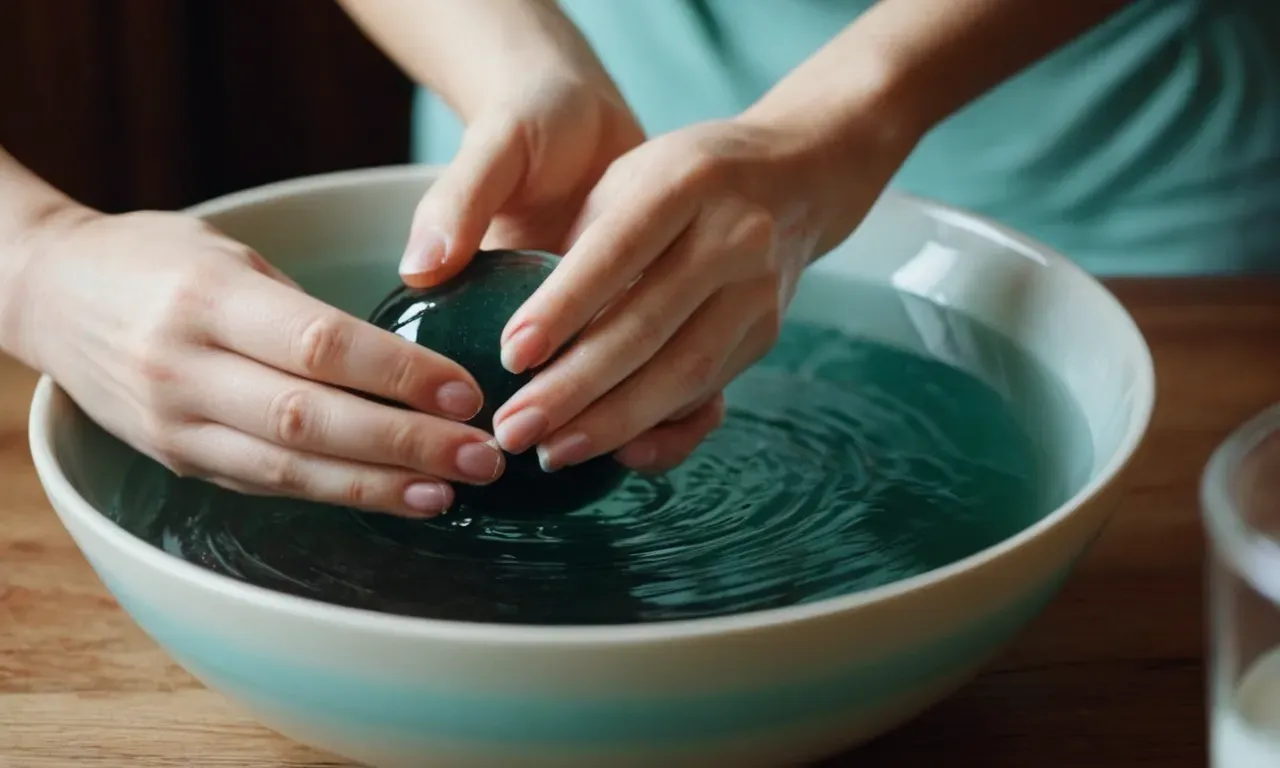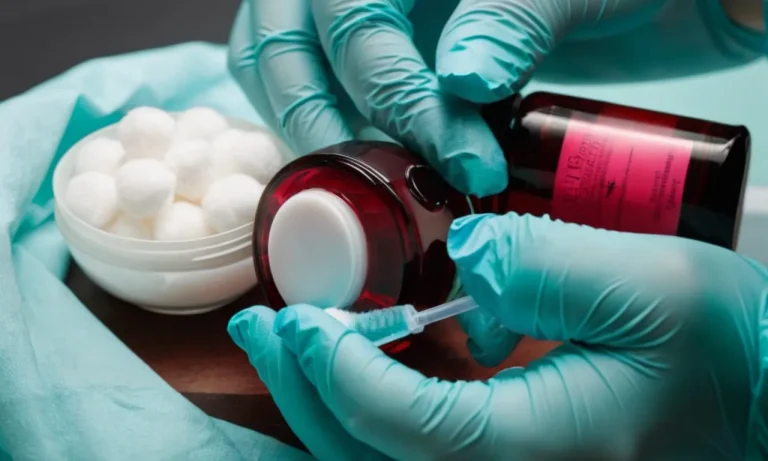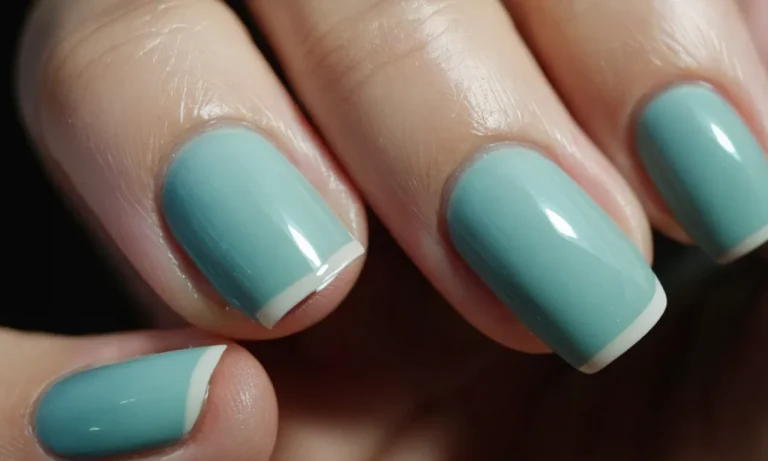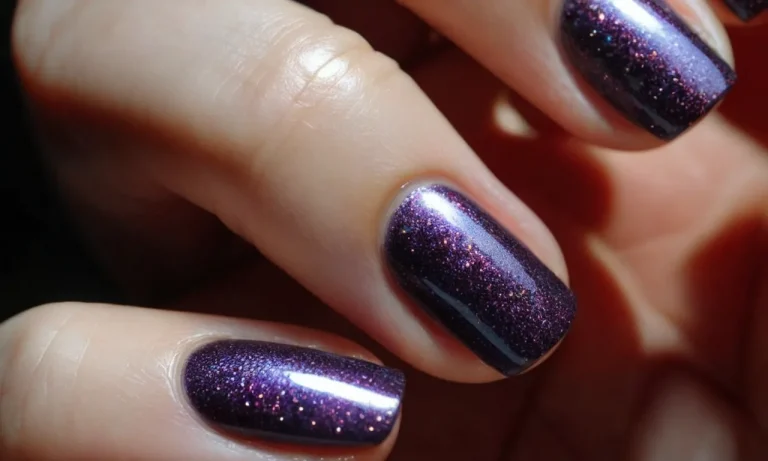How To Relieve Nail Pain: A Comprehensive Guide
Nail pain can be extremely uncomfortable and disrupt your daily activities. If you’ve ever experienced throbbing, piercing pain in your fingernails or toenails, you know how agonizing it can be. The good news is there are many effective home remedies and treatments available to find relief.
If you’re short on time, here’s a quick answer to your question: Soaking your nails in warm water, applying ice packs, using pain-relieving creams, and taking oral pain medications can help relieve nail pain.
In this comprehensive guide, we will cover the various causes of nail pain, symptoms to watch out for, and provide a wide range of DIY home treatments, medicinal solutions, and professional medical procedures to alleviate nail pain.
Common Causes of Nail Pain
Ingrown Toenails
Ingrown toenails are a very common cause of nail pain. An ingrown toenail occurs when the nail grows into the skin alongside it, causing irritation, redness, swelling, and infection. This can be quite painful!
Some things that make you more prone to ingrown nails include improperly trimming your nails, wearing shoes that are too tight, and injuring your toes. To treat an ingrown nail, see your doctor for help trimming and padding the nail properly.
For severe or recurring cases, a minor procedure to permanently narrow the nail or remove part of it may be needed.
Fungal Nail Infections
Nail fungus is another prevalent problem leading to nail discomfort. Fungal infections cause the nail to become discolored, thickened, and brittle. As the fungus progresses, it can be pretty painful due to swelling and separation of the nail from the nail bed.
Fungal nail infections are contagious and commonly spread in warm, moist environments like public showers or swimming pools. Seeing a dermatologist for an antifungal medication is the best form of treatment. For serious cases, the infected part of the nail may need to be removed.
Nail Trauma and Bruising
Injuries to the nail bed can result in a lot of pain. Jamming or crushing a finger or toe can cause blood to pool under the nail, leading to throbbing pain and bruising. If the impact is forceful enough, the nail may partially or fully come off. Mild nail bruises typically heal on their own over time.
But significant trauma may require drainage of blood from under the nail by a doctor. Keeping the nail elevated, using pain relievers, and protecting the fragile nail with bandages can help manage discomfort as it mends.
Psoriasis
Psoriasis is an autoimmune condition that often affects fingernails and toenails. With psoriasis, nails may detach from the nail bed, become discolored, ridged or pitted. The affected nails are often painful.
Topical steroid creams, oral medications, injections, phototherapy, and biologics can all help treat psoriatic nails. Keeping nails trimmed and filed down can also minimize pain by avoiding snags and Hangnails.
Skin Cancer
Though rare, nails can sometimes develop skin cancer. Acral lentiginous melanoma is a form of melanoma that arises on nail beds. It causes streaks or spots on the nails, slow nail growth, and loosening of the nail.
As it progresses, the cancer can destroy the nail and advance into the underlying bone, causing severe pain. Consulting a dermatologist quickly at the first sign of any abnormal-looking nails is imperative, as early treatment greatly improves outcomes for this aggressive cancer.
Nail Pitting and Ridges
Various systemic conditions can cause changes in nail texture and appearance, like ridges or dents/pits. This nail distortion can make nails more prone to cracking and catching on things, creating pain. Some examples include psoriasis, inflammatory arthritis, thyroid disease, and anemia.
Working with your doctor to get the underlying condition under control is the key to improving associated nail abnormalities and discomfort. Using moisturizer creams on the nails and cuticles can also help reduce brittleness and cracking.
Symptoms of Nail Pain
Throbbing Pain
One common symptom of nail issues is a throbbing pain in the nail or nail bed. This intense, pounding sensation indicates inflammation or infection putting pressure on the sensitive nail nerves. The pain may be worse at night or when touched.
Throbbing nail pain should not be ignored as it usually signals a problem needing medical attention.
Swollen Nail Bed
A puffy, inflamed nail bed is a clear visual sign something is wrong. The tissue around and under the nail becomes swollen, red and tender when infected. Common causes include inflammatory conditions like ingrown toenails or finger infections from hangnails, manicures or injury.
The swelling puts additional strain on the nail, leading to throbbing pain. Prompt treatment is key to reducing swelling and discomfort.
Discolored Nails
Nail discoloration can indicate various issues. Yellow or green hues may signal a bacterial or fungal nail infection. Dark spots or streaks can occur with mole growths or melanoma. Blueish hues may result from blood under the nail (subungual hematoma) due to trauma.
Purple-black shades may indicate a blood circulation issue. If nails become discolored, opaque or start detaching, a podiatrist or dermatologist should evaluate the cause.
Pus Drainage
The presence of pus oozing from the nail fold or nail bed is never normal. Purulent drainage signals an infection is brewing internally, putting significant pressure on the nail. Common causes are acute paronychia infections of hand nails or abscessed ingrown toenails.
However, pus can also result from nail fungus or less common issues like herpetic whitlow. Doctors will drain the pus surgically or with other methods while also prescribing antibiotics.
Loose or Detached Nails
| Partial Nail Lifting | Usually caused by physical trauma that loosens the nail from the nail bed below. The detached part remains connected at the base. |
| Complete Nail Detachment | Can occur with fungal infections destroying nails from below or serious injuries ripping nails off the fingers/toes. |
Nails become vulnerable to fungal or bacterial invasion if they fully or partially detach from the nail bed. Bed discontinuity also causes pain when pressure is applied during normal activity. Immediate medical care is vital to preserve remaining nail and prevent long-term damage or permanent loss.
Home Remedies for Nail Pain Relief
Trying some simple yet effective home treatments can help provide relief from uncomfortable nail pain. Many ingredients commonly found at home have soothing, anti-inflammatory, and antimicrobial properties to tackle the cause of the discomfort.
Soak Nails in Warm Water
Immersing the affected nails in warm water for 15-20 minutes helps relax the skin and tissues surrounding the nail bed. The moist heat boosts circulation which reduces swelling and tenderness. Do this a few times a day until the irritation subsides.
Apply a Cold Compress or Ice Pack
Applying something cold can alleviate the inflammation and throbbing sensation under or around the fingernail or toenail. Wrap some ice cubes or frozen vegetables in a towel and press it gently against the area for 10-15 minutes several times a day. Don’t place ice directly on the skin.
Use Pain-Relieving Creams
There are many topical creams containing active ingredients like menthol, eucalyptus oil, aloe vera, comfrey root or capsicum that provide a numbing effect. They are commonly available at pharmacies and groceries. Gently massage a small amount onto the skin around the painful nail twice daily.
Take Over-the-Counter Pain Medication
Oral OTC medications like acetaminophen, ibuprofen or naproxen sodium can temporarily alleviate nail pain and inflammation when applied as directed. But prolonged use may cause side effects. Check with a doctor first.
Trim Ingrown Toenails
Carefully trim an ingrown toenail with a sterilized nail clipper. Cut straight across, level with the end of the toe but avoid digging too deep into the sides or you may risk infection. Trim once a week until the condition improves.
Apply Antifungal Creams
If a fungal nail infection underlies the discomfort, using a pharmacy bought or prescription antifungal cream containing active ingredients like ketoconazole, econazole, or oxiconazole can help cure it. Apply it to the infected nail and surrounding area as directed for several weeks.
Keep Nails Short and Clean
Regularly trimming nails straight across leaving no jagged edges prevents hangnails from developing into painful tears. Also clean accumulated dirt and debris under nails with a soft brush and rinse. This helps prevent nail problems.
Use Topical Antibiotics and Bandages
If the nail pain stems from an injury causing bleeding or pus drainage, applying topical antibiotic creams or ointments like Neosporin after cleansing the area can prevent infection and speed healing. Cover it with an adhesive bandage and change daily.
Medical Treatments for Nail Pain
Oral or Topical Antifungal Medications
Fungal nail infections are a common cause of nail pain. Doctors may prescribe oral antifungal medications like terbinafine or itraconazole to treat fungal infections from the inside out. For mild cases, topical antifungal lacquers, solutions, or creams containing ingredients like ciclopirox or amorolfine can be applied directly onto affected nails (1).
These medications help get rid of fungi causing infection and discomfort in the nails. With several weeks or months of treatment, the pain and inflammation will likely improve as the infection clears.
Steroid Injections
For sudden and severe nail pain, steroid injections can provide fast relief. Corticosteroids like triamcinolone or betamethasone are injected directly into the cuticle or nail bed (2). The steroids work to reduce inflammation that may be putting pressure on nail nerve endings.
Patients typically experience significantly less pain within a day or two of the injections. However, the pain relief is temporary, lasting a few weeks up to several months.
Professional Nail Removal
Sometimes damaged parts of a nail need to be removed to get rid of the pain. Podiatrists can partially or completely remove nails using different techniques like chemical cauterization, surgical extraction, or laser (3).
Removing the irritating parts of the nail provides pain relief and allows the nail to regrow healthier. Minor nail removal procedures can be done quickly in the doctor’s office using just local anesthetic. Removal of an entire nail will result in several months of numbness until the nail grows back.
Nail Surgery
Various surgical procedures can treat nail abnormalities and damage that may be causing chronic pain. For ingrown toenails, surgery can remove part of the nail and prevent it from digging into the skin (4).
Permanent ingrown nail relief is achieved by destroying the nail root so that part of the nail stops growing back. Surgery may also correct nail deformities or irregularities that make the nail more prone to pain and injury. After recovery, surgery provides long-term freedom from nail pain.
Laser Therapy
Laser treatments help resolve nail pain and damage without the need for medication or invasive procedures. The laser light targets fungi and other microorganisms living under and inside the nail (5). It also improves nail growth and prevents cracking and splitting which can be painful.
Multiple laser therapy sessions are usually needed to fully resolve fungal nail infections and related pain. Treatment is safe and causes little to no discomfort.
Chemical Cauterization
Applying chemicals like sodium hydroxide can semi-permanently stop parts of the nail from growing back (6). Chemical cauterization is used for severe ingrown or deformed nails that are highly prone to pain. The chemicals damage the nail root to prevent regrowth in targeted areas.
This provides long-term relief from recurring pain as problem parts of the nail no longer exist. The chemicals do not damage surrounding skin. Minor scabbing and drainage may occur as the nail sheds off.
When to See a Doctor
Experiencing nail pain can be extremely uncomfortable. In most cases, minor nail issues can be treated at home with simple solutions. However, certain symptoms warrant a trip to the doctor to prevent further complications.
Consulting a medical professional is crucial for proper diagnosis and treatment.
Unbearable Pain
If you have intense and unrelenting nail pain that does not get better with at-home treatment, it’s vital to make an appointment with your doctor. Per the American Academy of Dermatology, immediate medical care is necessary if over-the-counter medication and home remedies do not provide relief for excruciating nail pain.
Injuries with Severe Bruising or Bleeding
Nail injuries that result in extreme bruising, bleeding that won’t stop, or a partially detached nail should be evaluated quickly by a medical professional. Seek emergency care if the nail is completely torn off. These traumatic nail issues require treatment to prevent infection and other concerns.
Signs of Infection
Symptoms of a nail infection include pain, swelling, redness, drainage, and foul odor around the nail. An infected nail can lead to serious complications without medical intervention. Anti-fungal medication or nail removal may be necessary depending on the severity.
Persistent Discoloration or Thickening
Discolored, distorted, or thickened nails that do not improve could potentially indicate an underlying chronic condition such as thyroid disease, diabetes, or cancer. Consulting a doctor can help diagnose and manage any associated illness.
Separation of Nail from Nail Bed
When the nail separates from the nail bed, it can cause discomfort and provide an entry point for bacteria and fungus. The American Osteopathic College of Dermatology recommends seeing a physician promptly if greater than 25% of the nail is detached to prevent infection and permanently losing the nail.
| Symptom | When to Seek Medical Care |
|---|---|
| Unbearable pain unresponsive to home treatment | Immediately |
| Severe nail bruising, bleeding, or partial detachment | Urgently |
| Signs of infection like swelling, redness, odor | Within 24 hours |
| Persistent discoloration or thickening of nail | Within several days |
| Greater than 25% detachment from nail bed | Promptly |
Don’t delay seeking medical attention if you have worrisome nail symptoms. Catching issues early can prevent complications and permanent damage. With treatment from a podiatrist, dermatologist or primary care physician, most nail problems can be successfully managed so your nails can return to their healthy, beautiful best.
Conclusion
Living with chronic or acute nail pain can greatly reduce your quality of life. Thankfully, there are many simple home remedies you can try to find relief fast. For severe, recurring, or worsening pain, it’s important to make an appointment with your doctor or dermatologist to treat the underlying cause.
With the proper treatment plan, you can get back to pain-free nails and hands. Don’t hesitate to seek professional medical care if home treatments aren’t providing enough relief. With persistence and patience, you can finally say goodbye to nagging nail pain.







